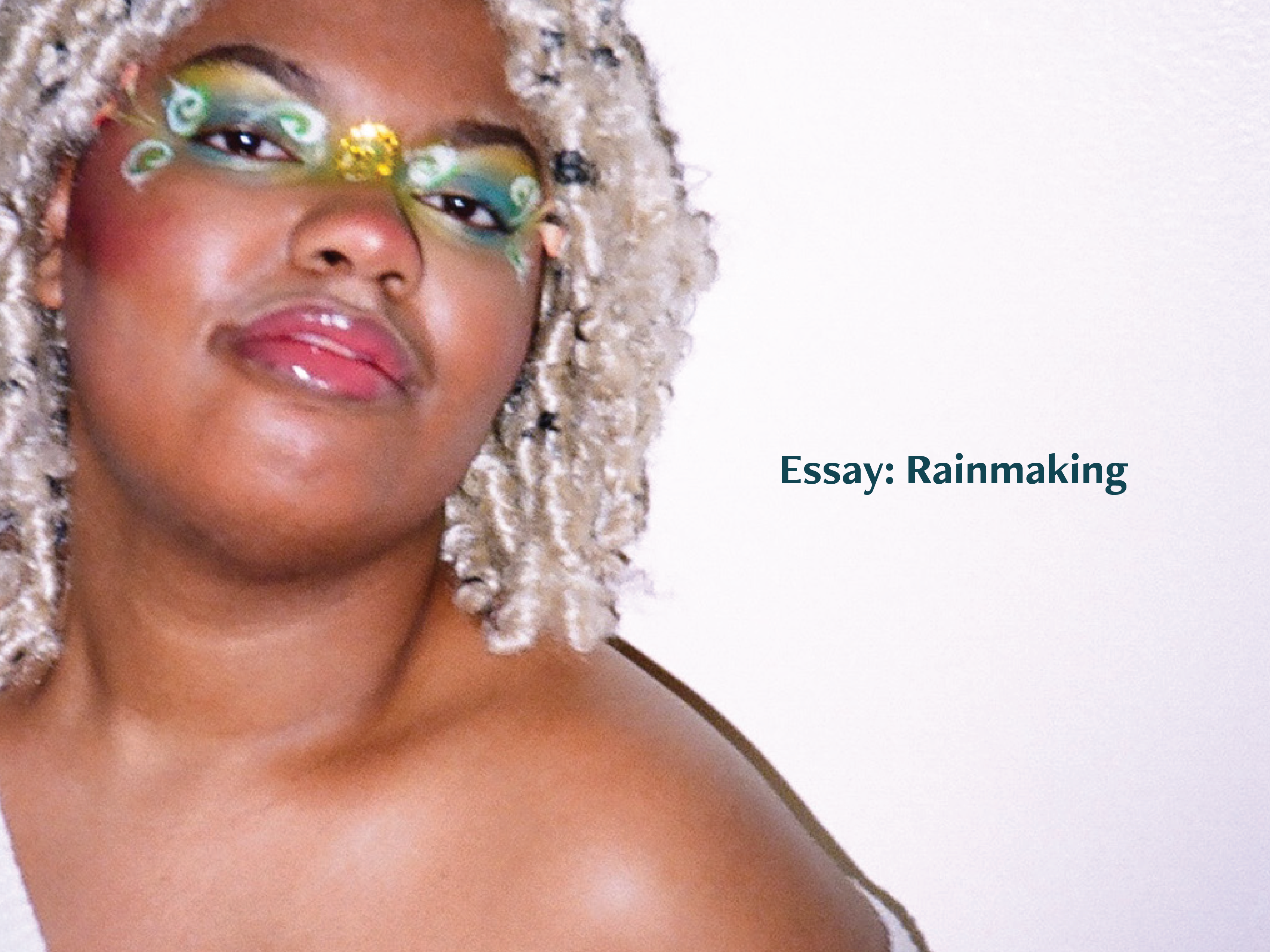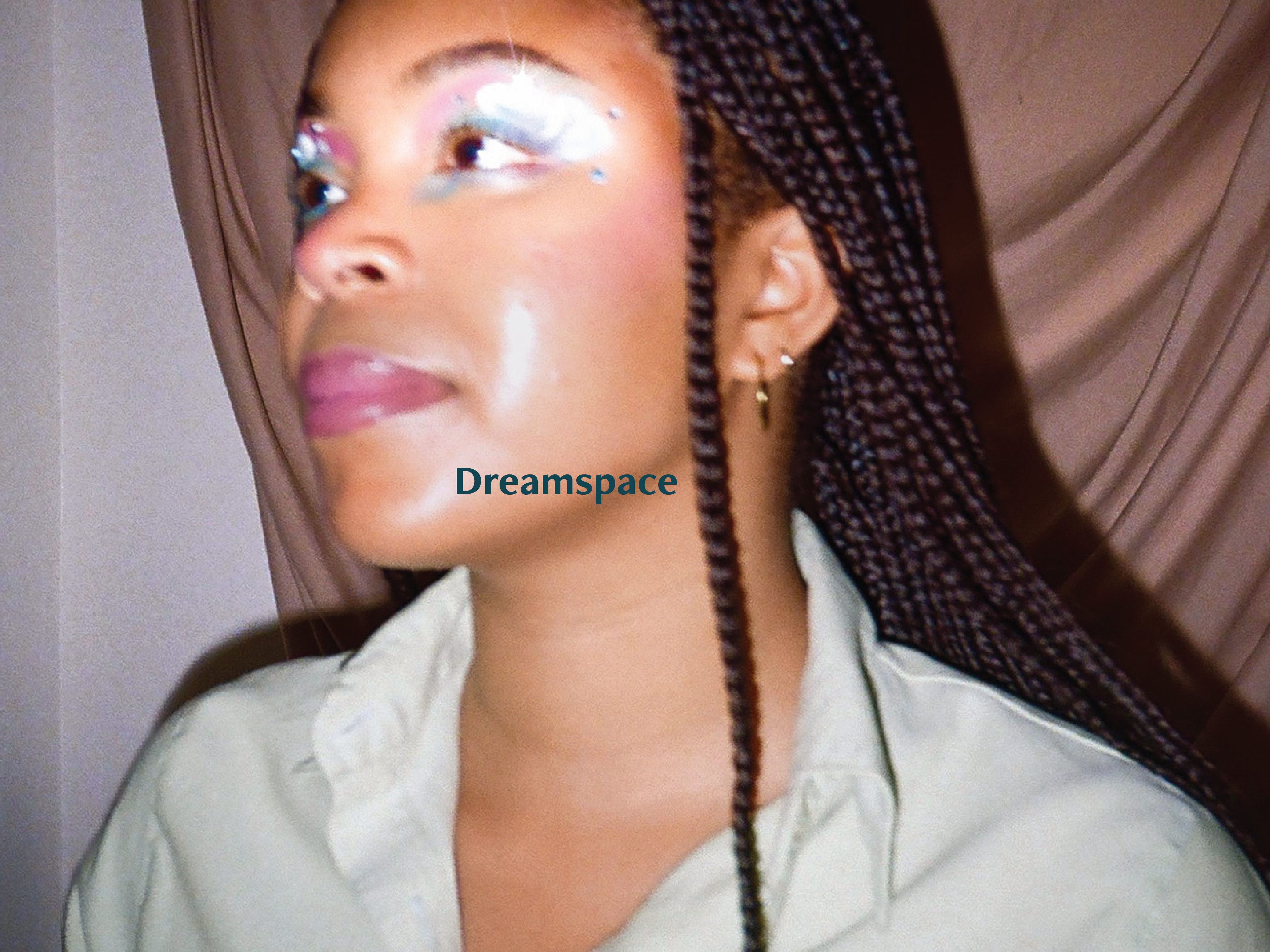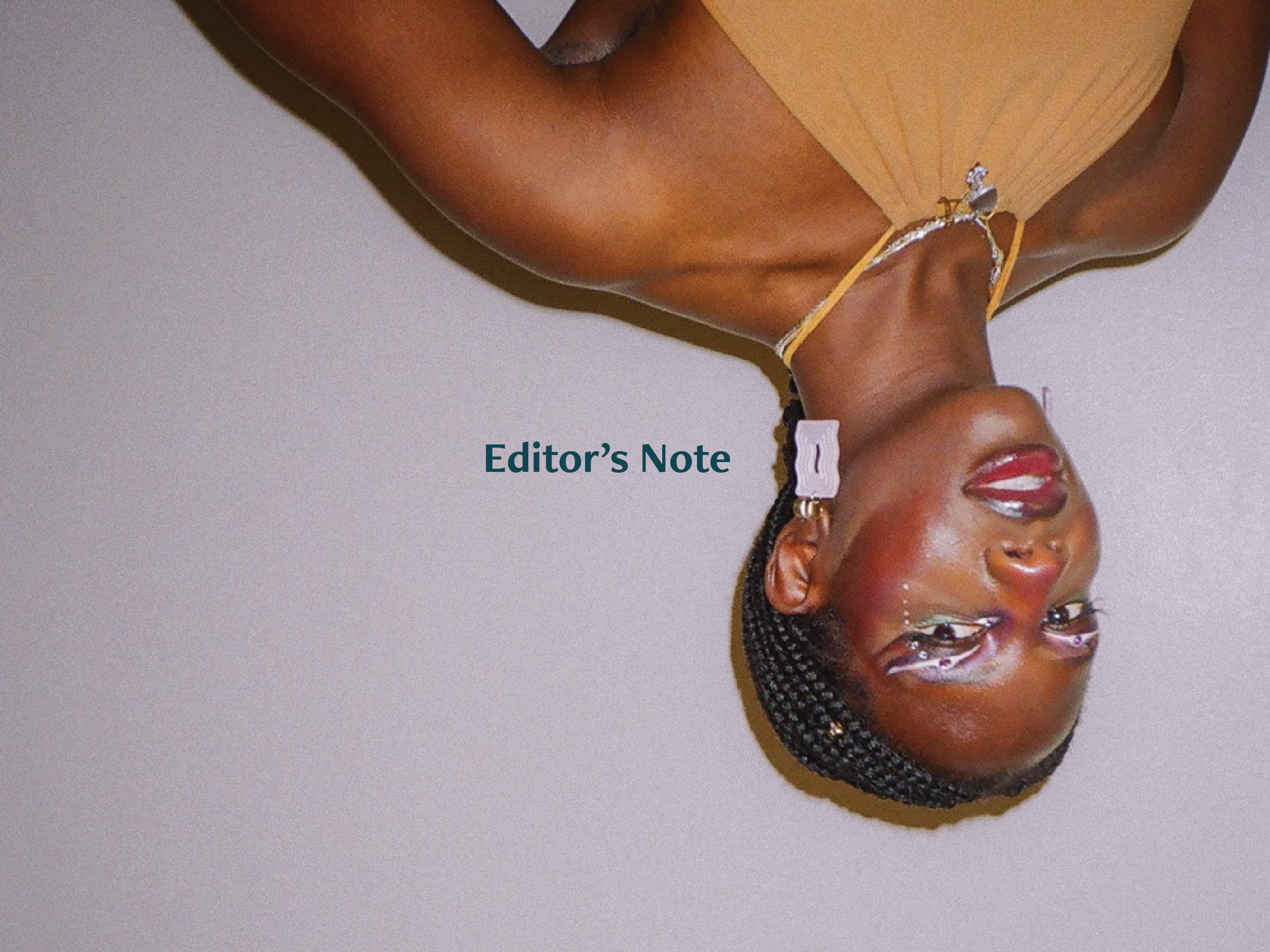realness, resistance, and gender non-conformity in Black women
by: Esther Omole
No ingenuity is more complete than that of the wig installer. I have sacrificed afternoons to mesmerizing videos of Black women cooling glue on their foreheads and sliding 28’’ long body wave wigs into place. Minutes before leaving for school, work, or a party, these experts re-frame their faces, studied in the art of transformative aesthetics. “Real HD” lace wigs are a new trend in Black women’s hair that approximates the scalp so perfectly with lace that it “melts” into the skin. Even viewed inches away from the head, tendrils of the desired wig texture appear to emerge from the skin itself.
In lieu of Real HD clones of foreign heads, my mother pored over texturizers and relaxers at my age. She grinned through the 80’s under a short, dark red mop of straight hair. My mother achieved this “effortless” European tousled trim after hours spent burning her hair smooth, washing down her scalp, and turning carefully in front of a mirror, hot curler in hand. There was nothing real about the leaps she made into femininity through this carefully curated gesture, and no redress for the time she sacrificed to perfecting this look on her naturally coiled hair. She was already tasked with becoming a Westernized professional to live, work, and enter society. Yet she actively became an expert in the art of slipping under the scalp of a white woman (even if it was only for a few hours a day). This in itself is a fantastical act, an extra sleeve sewn by expert hands over the body. It is extra-human—un-real.
In the English language, the word real is defined as “the state of actually existing as a thing or occurring in fact; not imagined or supposed”. To be real, an entity must be genuine rather than artificial. Gender, being a social construction of supposed biological difference between two primary genders, is by its very definition “un-real”, but has certainly been actualized through its inundation in Western society. Because of this actualization, it is real in that it has become fact in our shared reality under white supremacy. 1
For this society’s purposes, a “real” woman is a white person with an anatomical vagina who abides by patriarchal mandates of submission, smallness, beauty, and passivity. This imagined ideal solidified into biological “fact” is the only person in Western(ized) society that can succeed at embodying womanhood. The emergence of this ideal was synchronized with the Trans-Atlantic slave trade and the invention of race as a justification for enslavement. Black women were necessarily barred from womanhood to reify their imagined strength, bestiality, and capacity for work. 2 These justifications evolved into symbolic stereotypes like hypermasculinity, hypersexuality, and grotesqueness that marginalize the Black feminine today.
Dedications to “realness” have deep lineages in queer Black lexical arrangements. Black women who identify as trans utilize the “real” to assert relative proximity to legible gender. In ballroom culture, a community rooted in intersections of queer Black and Latinx kinship structures and pageantry, “realness” is often offered up as a performance criteria for balls. During conversations with ballroom communities in Detroit, gender theorist Marlon Bailey notes that trans women, more so than queer cisgendered men, rely on gender normativity to circumvent the threat of gendered and sexualized violence. In discussing the heightened violence surrounding gender non-conformity in his community, Diva D Bvlgari, a queer man, tells Bailey that some trans women “real as hell, won’t go out during the day.” 3 According to Bailey, realness is defined as “a theory of quotidian performance [that] offers a way to understand how all gender and sexual identities are performed” or a minimization of “any sign of deviation from gender and sexual norms that are dominant in heteronormative society.” "Realness" is a structure of thought that foregrounds the idea that to be real is to abide by preconceived gender ideals. The closer one is to being perceived as “queer gendered,” the less “real” they are.
Here we can revisit the Western definition of a “real” woman—a white person with an anatomical vagina who abides by requisite norms of submission. There are a number of human bodies that do, in fact, fit into these corporeal parameters. Humans that fit the definition above are socially legible as women. This presents an issue for any other variety of body that seeks to exist as a woman in a Western context. They will simply never produce the necessary combination of traits to meet this social imperative.
In order to exist and function in such a reality, one such variant body, a Black trans woman, erects a self-assessment protocol appropriately titled, “realness.” Black trans women can become legible as women when they adopt the “real” feminine stature and aesthetics. This act of mutability requires reading and embodying requirements, i.e. making one’s frame smaller or lightening one’s skin, in order to present as “real.” Because it requires making physical and social leaps in order to present as a body that is by definition irreproducible and singular, the very act of achieving legible womanhood proves its unreality.
Black women daily ask: if preconceived alternate gender realities can be mastered, what other realities can be activated through individual innovation?
The traits necessary to adopt in order to be “real” manifest differently for every non-white woman's body. Black cisgender women are afforded a proximity to “realness” on the basis of partially meeting the physical requirements it defines through anatomical assignments at birth. Black trans women are required to navigate this additional dimension of Western-defined womanhood in order to achieve “real” legibility. When Black women pursue “real” womanhood, they to varying degrees approximate a physical body that they do not inhabit. They learn to enter a separate dimension of being, and have transcended the “real” by carrying out the unreal act of slipping into what is, for them, a fictive sleeve. By operating in this state of flux, they become “real” only by cloaking themselves in a reality that isn’t their own–they exist in a constructed reality, not in biological fact. Thus, a Black woman’s ability to be read as a “real” woman reifies the conclusion that gender is a socially mandated construction.
For Black women to defiantly proclaim “realness” in the face of inherent denial of the possibilities of femininity in their bodies is to actively resist that denial. When Black women approximate the irreproducible woman, their practiced “realness” is a fantastic delivery. By taking a purported reality and turning it on its head, by surpassing erected femininities and escaping into un-real realms, they conjure a fantasy.
A central feature of “real” femininity that so entangles Black women in Western society is hair. White Eurocentricity dictates that a woman have long hair with varying levels of straight/waviness and no diverging presence of kinks. Black hair, often thick and coily, cannot meet this demand in its natural state. Therefore, the proportional length and straightness of one’s hair directly correlates with their level of perceived “real” womanhood. Beyond assimilation into the feminine, it proves essential for coordinating a sense of safety and legitimacy under white capitalist hegemony. Many Black women choose to wear their hair straight(ened) for special occasions, for interviews, to mathematically increase traits including approachability, respectability, perceived initiative, etc. For Black women, especially Black trans women, this legibility is a means of survival, as “realness” serves to shield them from disproportionate levels of violence and harassment. 4
Since my mother’s tangle with texturizer in the 80’s, Black women’s hair has exponentialized--in other words, has reached unprecedented levels of “realness”. Real HD Lace is simply one of the latest in a series of easy-to-switch hair innovations. Mastering the attachment of straight hair to the head has ushered in a whole different era of style. Pink, green, blonde haired girls will become ginger, blue-black, brunettes in a day. Ankle length locs become buzzcuts. Mermaid sew-ins become beaded cornrows. No texture, color, length, or style is out of reach to the pick-comb armed and iron-willed. Black women apply representatives of Eurocentric ideals—light hair, extensive length, smooth edges—and eradicate them in the same breath. Each decade, new styles pour in to answer the centuries-old imperative to change, insisting that altering Black hair into “real” European hair is possible and anything but simple.
It is through that painstakingly achieved “possibility” that impossible shape-shifting practices have emerged. This concentrated expertise in becoming “real” engenders a delivery that surpasses presentations of white womanhood. The physical labor and knowledge needed to achieve a bleach-blonde blowout on coily dark hair, for example, far exceeds that which is needed to transform naturally pin-straight blonde hair. The result is a heightened, curated enhancement of the “real” European equivalent. By exhibiting mastery in aligning with Western definitions of “real” womanhood, Black women reveal the possibility of forging new definitions for gender expression. If one’s hair can transmute from coiled to pin-straight while masking the effort, it can dabble in all that is in-between. Black women daily ask: if preconceived alternate gender realities can be mastered, what other realities can be activated through individual innovation?
Without rigid Western boundaries for “possibility”, a personhood that is infinitely creative can be affirmed. When Black women pass through gendered realities, they reveal the space of play that exists in every individual body in a society that is incentivized by its boundaries to disappear that power. Though it takes dedicated work, effort, and expertise, hair can look like anything. Like all constructions—gender, sexuality, or racial difference--it is not immovable but ever-expansive. Black women provide new hypotheses for being by exacting this decomposition through their creativity. This inspires all people to dream beyond gender difference, to queer our representations of human.
A new generation of gender vagabonds buys back the time my mother lost to the curling iron with their fantastic ingenuity. No metrics for the “real” can be applied to this generative, de-assemblage of Western conceptions of time. Like the Real HD install, processes that once necessitated whole afternoons can take a mere hour. And in pursuing the “real” they sidle like spills into fantasy, a new kind of time. Hair can take an hour to grow, or 2 weeks. Irises flutter from blue to brown instantaneously. Noses disappear, only to reappear with a magician’s swipe, that age-old slight of hand. Western Eurocentric “real” womanhood can be surpassed, discarded. Something soft and sputtering, like a dream, emerges in its place.
Sources
Oyěwùmí, Oyèrónké. “Visualizing the Body: WESTERN THEORIES AND AFRICAN SUBJECTS.” The Invention of Women: Making an African Sense of Western Gender Discourses, NED-New edition, University of Minnesota Press, 1997, pp. 1–30. JSTOR, http://www.jstor.org/stable/10.5749/j.ctttt0vh.6. Accessed 18 Mar. 2023.
Hooks, Bell. "Ain't I a Woman? Black Women and Feminism." Argument 24, 1982, pp. 32-33.
Bailey, Marlon M. “Gender/Racial Realness: Theorizing the Gender System in Ballroom Culture.” Feminist Studies, vol. 37, no. 2, 2011, pp. 365–86. JSTOR, http://www.jstor.org/stable/23069907. Accessed 18 Mar. 2023.
Glover, Julian Kevon. "Redefining realness?: On Janet Mock, Laverne Cox, TS Madison, and the representation of transgender women of color in media." Souls 18.2-4 (2016): 338-357.




